Behavioural Change from Plastic to Paper Straws
The theme my website is exploring is the cultural difference between the UK, my adopted country, and my home country, Oman, regarding the use of one of the most prevalent pollutants found in the ocean, plastic, specifically plastic straws. This is to raise awareness and educate people in Oman about this severe issue. It will do this through:
- Audio Documentary
- Photographs
- Educational poster
The story reflects my experience and other students who moved to the UK from Oman. The objective is to induce behaviour change by emphasizing that minor adjustments in our daily lives, such as using paper straws instead of plastic straws, alleviate the significant consequences of climate change.
The fundamental idea was inspired by the artist Benjamin Von Wong who combined the beauty and originality of this environmental tragedy in his art piece The Parting of the Plastic Sea, influenced by the saying, “It’s just one straw, said 8 billion people”.

This image is pretty broad, and this is intended to expose the audience to the story’s primary idea of using paper straws. It shows a hand reaching for the drink with the paper straw, which is the project’s main goal. The image is dark to match the rest of the story, seeing the lighting decrease as we solve the issue of plastic straws.

This image depicts the beginning of the story. The photograph was taken during lunchtime and shows people using plastic, and it is a realistic depiction of a restaurant in Oman. The lighting was modified to emphasize negative behaviour, and the mood of the image is dark and conveys a warning. It is aimed at the Omani society to make them rethink how their everyday actions in their everyday surroundings might be harmful and encourage them to reassess their behaviour.

The student’s emotion is captured in the image as she notices the cultural differences and is amazed to find that people care about the environment. She is inspired to encourage others in her community to do the same. The surrounding lights are exaggerated to suggest that the student is inspired and has an idea. As we move closer to solving the problem of using plastic straws, the light in the image decreases.

This is an image of the student presenting the online campaign to the Omani audience on Zoom. She displays the poster she created with her Omani Students Society in Manchester colleagues and describes it while holding paper straws, encouraging the audience to use them by highlighting the impact of plastic straws on the environment and climate change. The photograph’s tone is lighter than the previous one to correspond to the story.

The image portrays the story’s conflict. The student is concerned since the paper straw became wet and torn before the drink was finished. Despite the tension, she recognizes the need to use paper straws rather than plastic straws to save the environment and give up a tiny amount of enjoying the drink to mitigate climate change. The message is how minor actions may have far-reaching consequences. The sky is grey and gloomy and is intended to indicate the beginning of a problem, i.e., rain.

The image concludes the conflict, where the hero found her way. It elicits a positive emotional response and denotes a “happy ending.” The colours create a peaceful atmosphere, and flowers are employed as a reward for improving behaviour. It also displays the joy of unity and working together to overcome obstacles. The soft tone, low contrast, the characters’ facial expressions, and colours all contribute to the overall mood.







